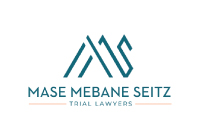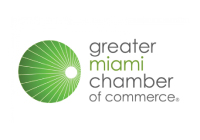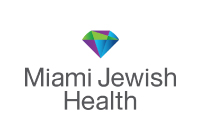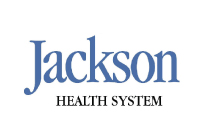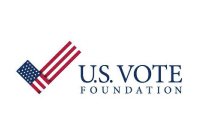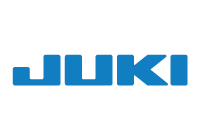ADA Website Accessibility (WCAG) Compliance
Miami, Orlando, Los Angeles
The Americans with Disabilities Act (also known as ADA) is a comprehensive civil rights law that was enacted in 1990 to protect individuals with disabilities from discrimination. This requires businesses and organizations that serve the public to provide reasonable accommodations to employees and people who have vision or hearing impairments, or learning, cognitive, and other disabilities.
In 2016, the ADA introduced Web Content Accessibility Guidelines (WCAG) and began including web presence as part of this practice. This means websites now have to follow a compliance checklist to meet one of three WCAG ADA compliance requirements. This includes desktop and mobile devices. While this is a fairly new requirement, lawsuits have been on the rise, with approximately 751 lawsuits having been filed against businesses regarding ADA compliance.
The most notable case being Winn Dixie, a supermarket chain in Florida. Despite revamping its website in 2016, Winn-Dixie neglected to include design considerations for users with disabilities. It resulted in the chain being fined $100k.
SpiderBoost provides the highest level of website development that satisfies the ever-evolving Web Content Accessibility Guidelines (WCAG). Our web design teams leverage years of experience with SEO and HTML, we design 4.5:1 contrast ratios and have mastered the ADA Website creation art – necessary to create visual presentations that delight and are accessible to all in today’s modern, mobile first, always connected digital world that.
Ready to Boost Your Digital Presence?
Miami, Orlando, Los Angeles ADA Website Accessibility (WCAG) Compliance Services
Specializing in WCAG compliant web design and development, our services offer a dynamic, cost-effective, and customized approach to digital accessibility. We empower your brand to excel by ensuring ADA compliance while optimizing your online presence. With our emphasis on WCAG guidelines, we help your website reach a wider audience and achieve measurable success.
WCAG Compliant Web Design
Our team of experienced designers creates visually stunning and accessible website designs, ensuring an engaging user experience that adheres to WCAG standards.
WCAG Compliant Web Development
We build robust, user-friendly, and ADA compliant websites. Our expertise spans across front-end, back-end, and full-stack development, ensuring seamless performance across devices.
E-commerce Solutions (Magento & Shopify):
We leverage industry-leading platforms like Magento and Shopify to create e-commerce experiences that are both powerful and accessible. Our designs comply with WCAG guidelines, making your online store a destination for all shoppers.
CMS Solutions (WordPress)
We offer WordPress-based solutions that are easy to manage and update. Our designs adhere to WCAG guidelines, ensuring your content reaches the widest possible audience with ease and compliance.
ADA Compliant Paid Campaigns
We strategize and execute paid advertising campaigns that are accessible to all. From campaign planning to ad design, we ensure each element aligns with ADA and WCAG guidelines for digital accessibility.
WCAG Compliant Landing Page Design & Development
We design and develop effective, ADA compliant landing pages that are not only visually appealing but also designed to convert. Our focus on WCAG compliance ensures your landing pages are accessible and effective for all users.
Is your website discriminating?
According to ACA, it might be.
Accessibility benefits everyone. A website is accessible when everyone, regardless of ability or disability, can use it and get the information they need. Accessibility can be a long journey, but you’ll never make the trip without taking the first step.
To the right is our own list of frequently missed compliance requirements that we see time and time again.
4.5 to 1 for ADA AA Compliance. 7.0 for ADA AAA Compliance
People with mobility impairments who must rely on keyboard access for operating a page benefit from logical, usable focus order. People with disabilities that make reading difficult can become disoriented when tabbing takes focus someplace unexpected or when they cannot easily find the content surrounding an interactive element.
Help users understand the purpose of each link. Provide text that identifies the purpose of the link without needing additional context. Assistive technology provides users with a list of links that are on the Web page. Link text that is as meaningful will aid users who want to choose from this list of links and also helps those who wish to tab from link to link. Stay away from “click here”
Most images are flat elements on websites. Screen readers cannot decipher the text inside of a flat image. Instead, any text that needs to accompany an image has to be done with HTML.
Similar to listing links in a page, one page (sitemap) should be created so Assistive technology has the ability to provide users with a list of pages that make up the website. Sitemaps that are meaningful will aid users who want to choose from a list of pages and also helps those who wish to tab through content.
ADA Compliance Levels
An ADA compliant site meets the WCAG 2.1 website compliance guidelines and offers an online experience that is user-friendly for all. The WCAG 2.1 guidelines are categorized into three levels of conformance.
Conformance at a higher level indicates conformance at lower levels. For example, conformance to Level AA implies conformance to Level A.
The most basic web accessibility features. The website MUST satisfy this checkpoint. Otherwise, one or more groups will find it impossible to access information in the document. Satisfying this checkpoint is a basic requirement for some groups to be able to use web documents.
Deals with the biggest and most common barriers for disabled users. Website SHOULD satisfy this checkpoint. Otherwise, one or more groups will find it difficult to access information in the document. Satisfying this checkpoint will remove significant barriers to accessing Web documents.
The highest level of web accessibility. A website MAY address this checkpoint. Otherwise, one or more groups will find it somewhat difficult to access information in the document. Satisfying this checkpoint will improve access to web documents.
Ready to Boost your website compliance?
If you would like to receive a quote or audit please fill out the form below and our experts will contact you.

